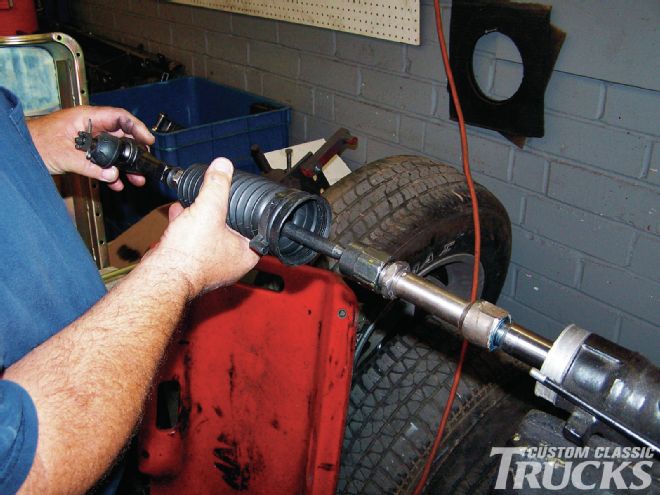
One of the best things to appear on the custom classic trucks scene is the availability of easy-to-install independent front suspension systems. Nothing does more to improve the ride and handling of a solid axle truck and get it closer to the ground at the same time.
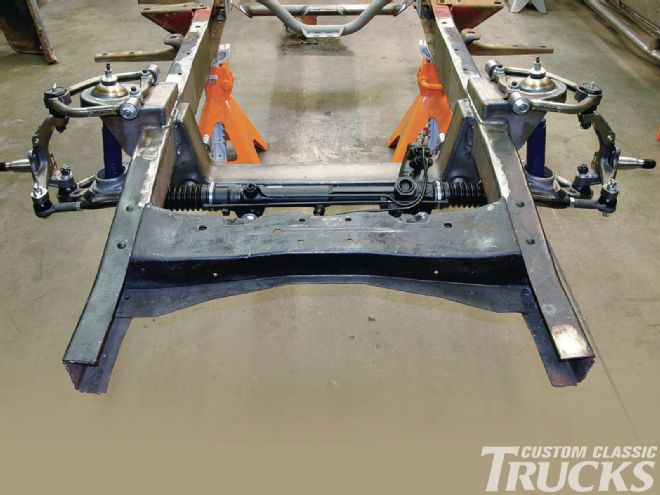 Custom Classic Trucks Editor Ryan Manson swapped a straight axle for a Heidts independent front suspension under his F-1 Ford. Part of the package was a widened Mustang II rack-and-pinion steering.
Custom Classic Trucks Editor Ryan Manson swapped a straight axle for a Heidts independent front suspension under his F-1 Ford. Part of the package was a widened Mustang II rack-and-pinion steering.
Many of the popular IFS systems are based, at least in part, on the Pinto/Mustang II design. Ford’s original design has reasonably good geometry, the ball joints and wheel bearings are bigger than the GM subframes that were common swaps, and it was equipped with rack-and-pinion steering.
While the Ford rack-and-pinion offers a number of advantages over the steering boxes found in early trucks, one of the issues is its width. The Mustang II rack was designed for a 57-inch track width; for most trucks that’s too narrow as tread widths are normally 2 to 4 and sometimes 6 inches greater.
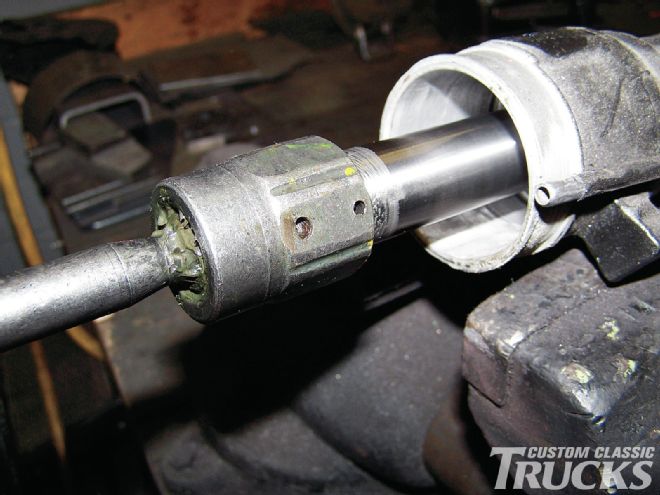 The Mustang II rack-and-pinion steering unit is 4 inches too short for the wide F-1 chassis. For that reason, an extension kit needs to be installed. The first step is to remove the old clamps and rack boots before unscrewing and removing the inner tie-rod ends from the rack.
The Mustang II rack-and-pinion steering unit is 4 inches too short for the wide F-1 chassis. For that reason, an extension kit needs to be installed. The first step is to remove the old clamps and rack boots before unscrewing and removing the inner tie-rod ends from the rack.
Adapting the suspension is simple enough; it only requires a wider crossmember, but stretching the rack is another matter. What complicates the issue is the steering geometry. Basically the inner tie-rod ends should pivot at the same point as the lower control arm, which results in the outer tie-rod ends traveling in the same arc as the steering arms on the spindles when the suspension moves up and down.
With the stock tread and rack width, that’s just what happens. However, when the tread is widened and the rack remains the same width, the difference in pivot points creates an issue called bumpsteer. The outer tie-rod ends now travel in a different arc than the steering arms, so as the suspension compresses and extends, the wheel alignment toes in and out causing the truck to wander.
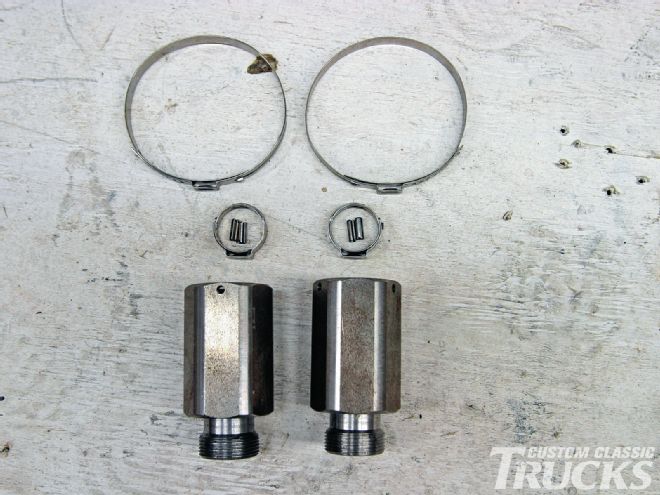 Heidts’ rack extension kit consists of two 2-inch extensions, four roll pins, clamps, and new boots.
Heidts’ rack extension kit consists of two 2-inch extensions, four roll pins, clamps, and new boots.
Just for fun, Brent VanDervort of Fatman Fabrications calculated that 0.18-inch toe bumpsteer on 5-inch-long steering arms equated to 2.06 degrees. As he says, “That’s not going to drive too well, especially when the suspension rebounds about 1 inch coming up from our 2-inch compression. I think the technical term is “twitchy!”
Like most things, there is a right and a wrong way to widen a Mustang rack. The wrong way is to simply install longer outer tie-rod ends. The inner pivot points remain the same so bumpsteer is a problem. The proper method is to add extenders to the rack—and there’s more than one way to do that as well. In some cases equal-length extenders are attached to each side of the rack; in others, one extender is added to the passenger side. Another option now available is the custom-width steering rack from Flaming River.
Regardless of how it’s done, the width of a rack-and-pinion steering gear has to be matched to the tread width, so don’t let anyone tell you that size doesn’t matter. CCT
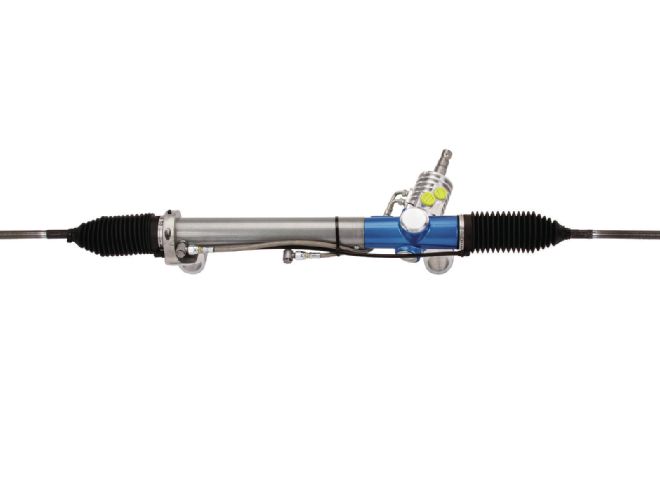 Flaming River offers the all-new XL front-steer power rack-and-pinion designed for wide‐framed cars and trucks. This completely new unit is based upon the popular front-steer 1974‐78 Mustang II unit, but is 4 inches longer—perfect for pickup trucks with a Mustang II-style frontend.
Flaming River offers the all-new XL front-steer power rack-and-pinion designed for wide‐framed cars and trucks. This completely new unit is based upon the popular front-steer 1974‐78 Mustang II unit, but is 4 inches longer—perfect for pickup trucks with a Mustang II-style frontend.
Staying Straight
By Brent VanDervort of Fatman Fabrications
At Fatman Fabrications we have found that taking the usually specified Mustang II caster setting from 1-1½ degrees positive up to 3-4 degrees positive really helps tame the over-assist complaint on MII racks. Probably better than playing with the pressure or flow, since the car’s weight now tries to keep the wheels pointing straight ahead. But we noticed that some trucks seem to gain a little bumpsteer issue as a side effect. Since the IFS is front steer, leaning the spindle back for more caster raises the outer tie-rod end. We’ve determined that a ¾-inch drop in the outer tie-rod position was required to return it to its normal relative height in the suspension system. To that end we now offer a special tie-rod end with an extended pin that restores the original steering geometry.